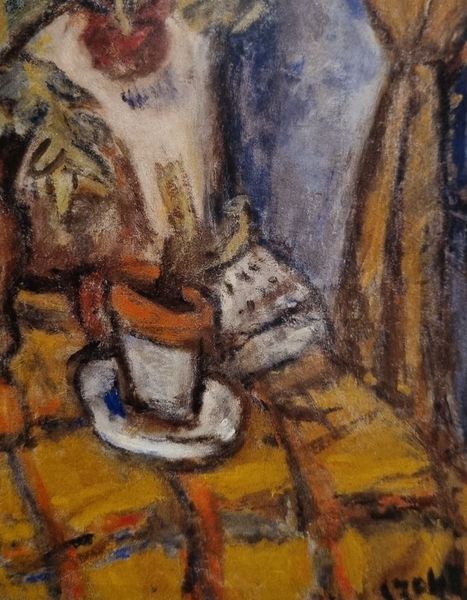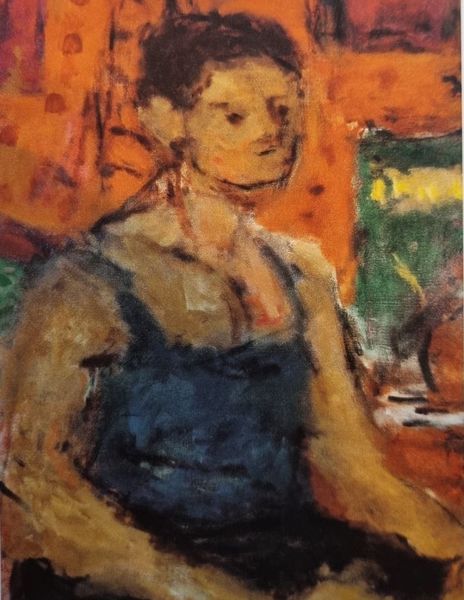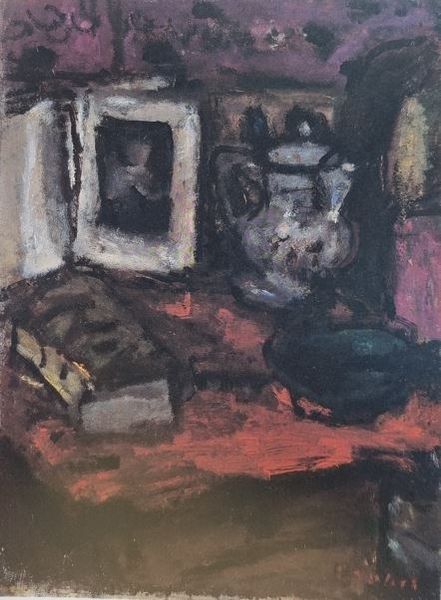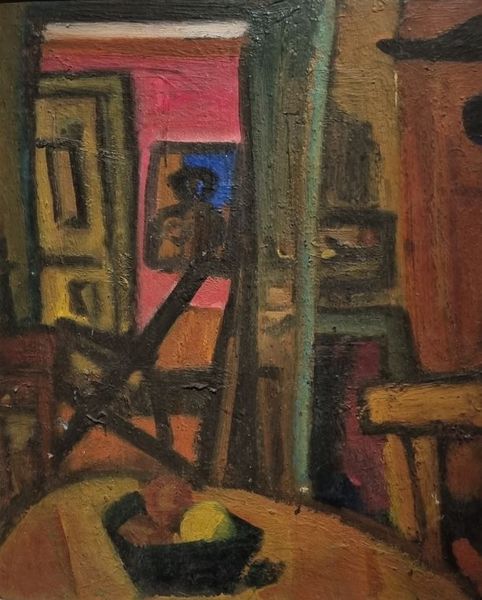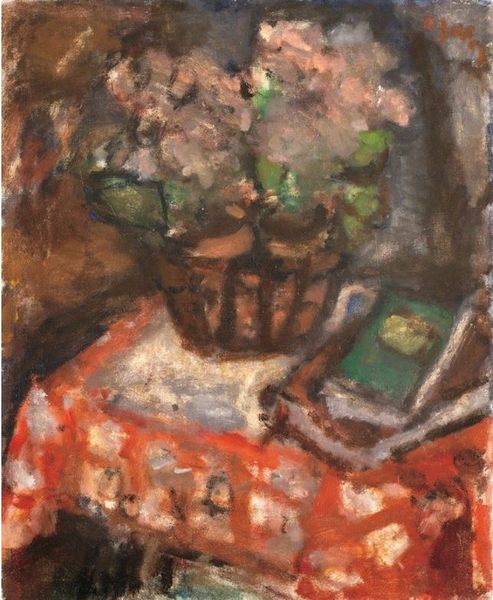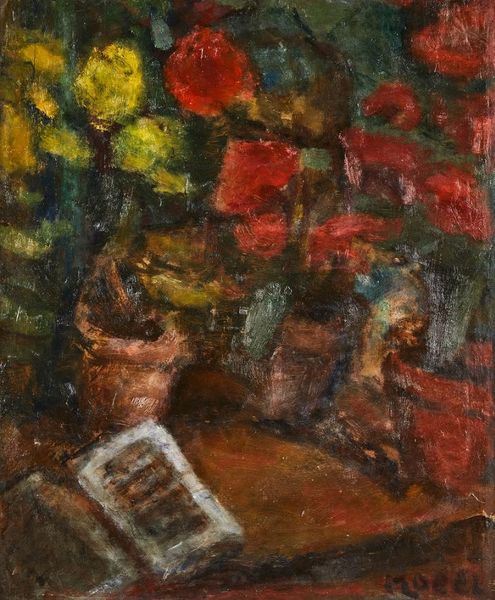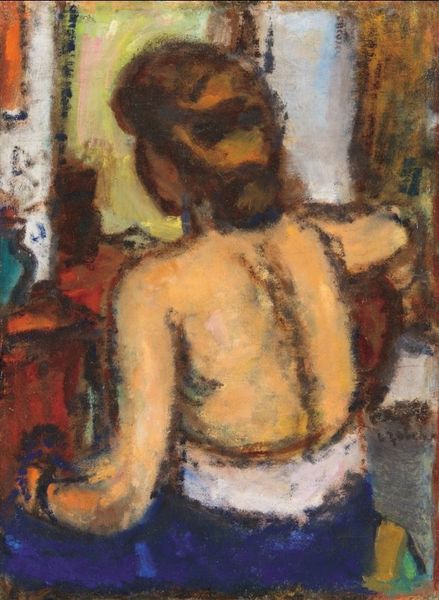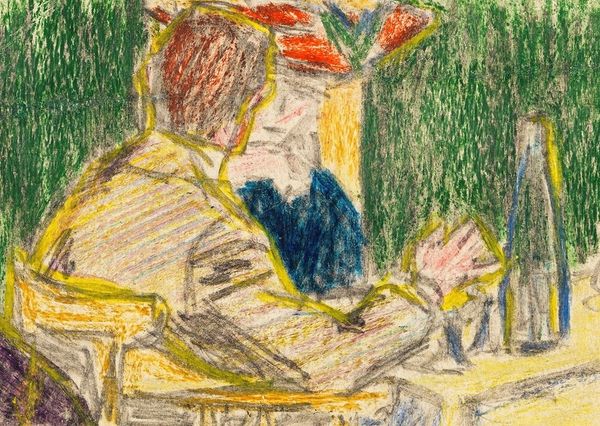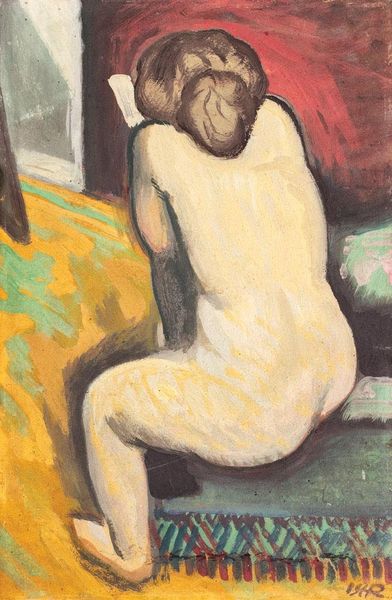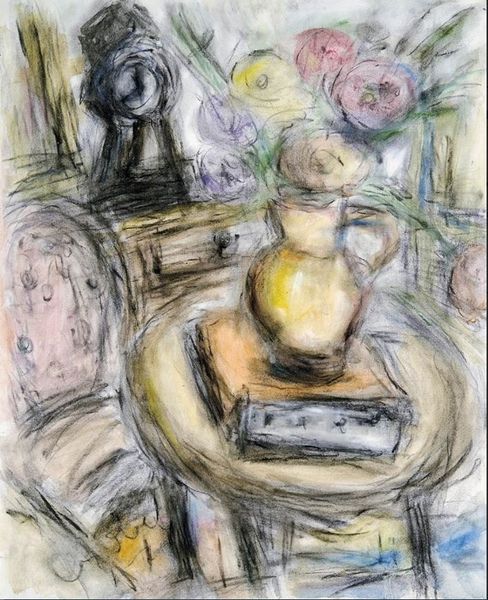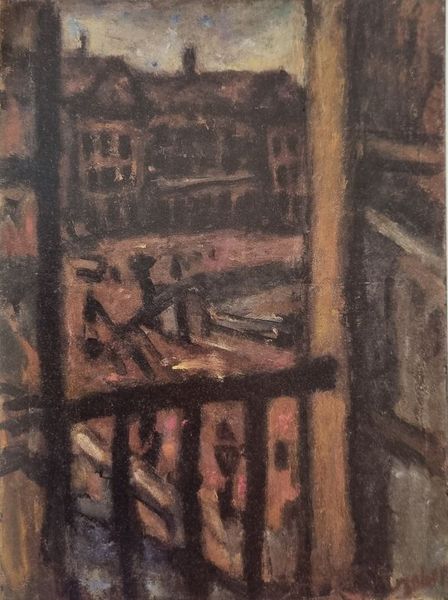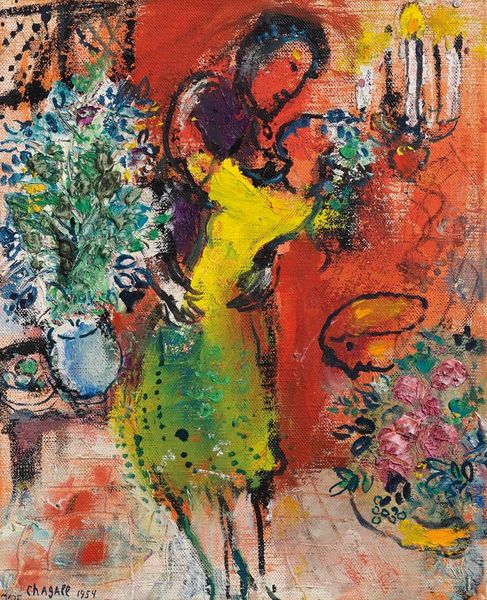
painting, oil-paint
#
portrait
#
painting
#
oil-paint
#
figuration
#
oil painting
#
expressionism
Copyright: Bela Czobel,Fair Use
Curator: I see melancholy lurking in every brushstroke. Editor: Indeed. We are looking at “Czóbel Béla Fésülködő Nő 1930," or “Bela Czobel Woman Combing Hair 1930" crafted by Bela Czobel in 1930 using oil paint. At first glance, I am drawn to how the composition relies on contrasts to create a visual push and pull. Curator: Push and pull...yes! It’s the internal struggle externalized. That solitary figure with her back turned. There is warmth, ochre, and terracotta tones surrounding her, and this feels to me like stifling heat, not comfort. And notice that small patch of white on the red table? The single ray of hope ignored. Editor: A fascinating reading. For me, the materiality—the thickly applied paint—adds another layer of complexity. Look how the brushstrokes become almost sculptural, building form while simultaneously dissolving it. There is structure here but the way Czobel worked, building up pigment with visible brushwork, defies precise contours and definition. Curator: Absolutely! He paints from the inside out, a pure expression of his internal state, I think. Did you know he spent time in the south of France alongside some Fauvist painters? I sense some of that wild color and freedom, filtered through his own particular lens of…dare I say it… existential dread? Editor: An informed and compelling point. The fauvist influence is present. Though I would be hard pressed to agree fully about that dread. Consider, for instance, how the interplay of flat planes and implied depth flattens pictorial space, calling attention to its artifice and the inherent contradictions in visual representation itself. It's both representational and not. Curator: A very literal view! Still, the perspective you bring helps ground my emotional flights of fancy, so thank you. I find it continually rewarding to consider the play between the subject, Czobel’s state of mind, and of course our own, as we observe and react to this painting. Editor: And I am grateful for the opportunity to bring my own insights to bare here today. To continue my line of thinking for another moment…one aspect of formal analysis seeks to understand visual structure through identifying fundamental shapes or ordering principles, as we have done, but as your thoughts highlight we are dealing with a more free form painter than those ideals align to. Curator: Agreed! Shall we move along and give another artist a turn in the spotlight?
Comments
No comments
Be the first to comment and join the conversation on the ultimate creative platform.
